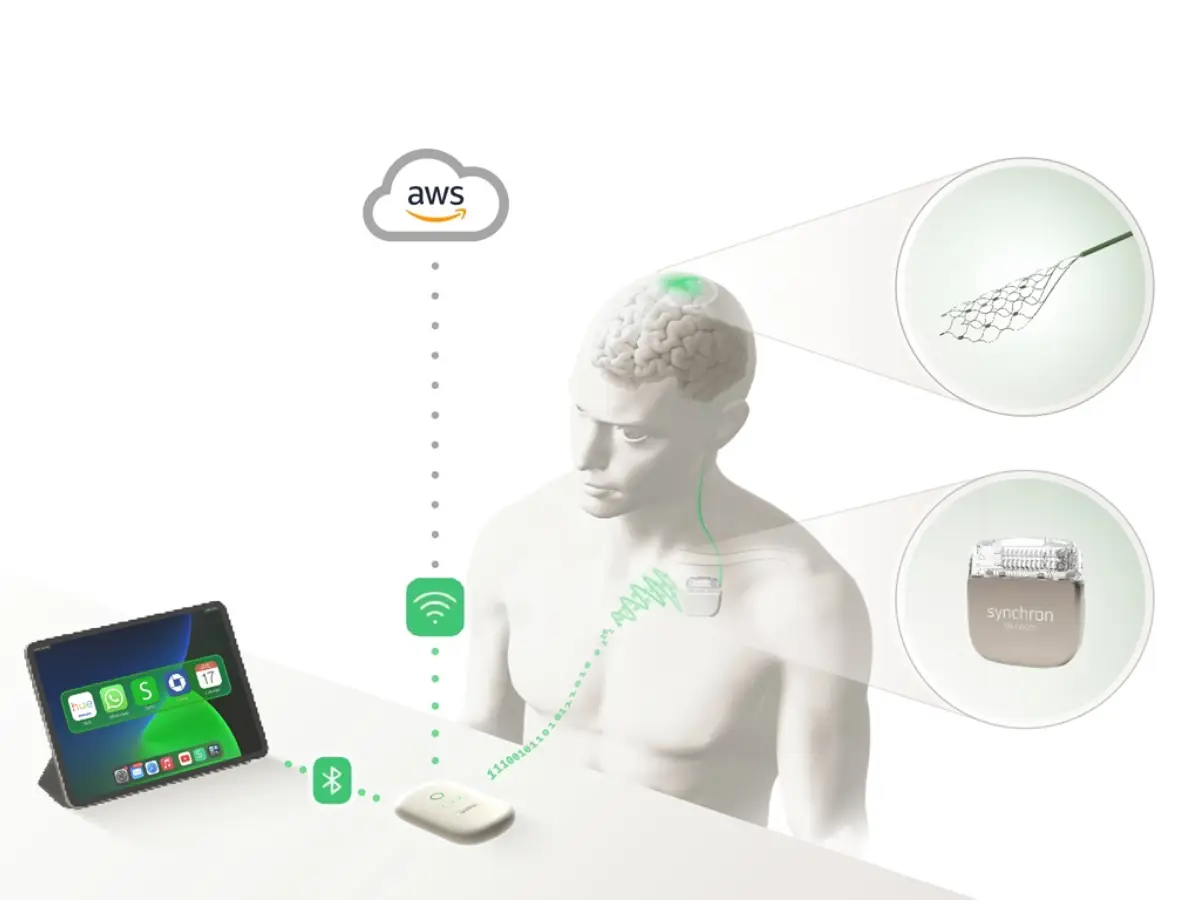In a groundbreaking development, Synchron has integrated an AI-powered chat feature into its brain-computer interface (BCI) technology.
This innovative step forward has the potential to revolutionise communication for individuals with severe motor impairments, showcasing the immense possibilities at the intersection of artificial intelligence and neurotechnology.
Understanding BCI and AI
Brain-Computer Interface (BCI) technology allows for direct communication between the brain and an external device. BCIs interpret brain signals and translate them into commands that can control various applications, such as computers, prosthetics, and other assistive devices.
This technology is particularly beneficial for individuals with disabilities, enabling them to interact with their environment using only their thoughts.
Artificial Intelligence (AI) refers to the simulation of human intelligence in machines. AI systems can perform tasks that typically require human cognition, such as understanding natural language, recognising patterns, and making decisions.
Integrating AI with BCI enhances the functionality and usability of these systems, making them more intuitive and efficient.
The New AI-Powered Chat Feature
Synchron’s new AI-powered chat feature is designed to offer users a seamless and natural way to communicate. Utilising advanced AI algorithms, the system accurately interprets brain signals, enabling users to engage in conversations through thought alone.
This development is particularly significant for individuals with conditions such as amyotrophic lateral sclerosis (ALS) or spinal cord injuries, who are unable to speak or move.
The technology uses a minimally invasive approach, with the BCI device implanted endovascularly via the jugular vein to position it close to the motor cortex.
This method minimises the risks associated with traditional open-brain surgeries while ensuring robust signal transmission for the AI system to process.

Potential and Implications
The integration of AI with BCI technology has profound implications for the scientific community and the general public.
For researchers and developers, this advancement represents a significant milestone in neurotechnology.
It opens up new possibilities for developing sophisticated and user-friendly BCI applications that can benefit a wider range of individuals, including those with non-motor impairments.
Economically, the AI-BCI integration could drive significant growth in the healthcare and assistive technology markets.
As these systems become more accessible and affordable, they are likely to see widespread adoption, creating new business opportunities and reducing healthcare costs associated with long-term care for individuals with severe disabilities.
For the general public, particularly those affected by debilitating conditions, this technology offers renewed hope and possibilities.
The ability to communicate effectively and independently can dramatically improve their quality of life, allowing them to interact with loved ones, participate in social activities, and access essential services online.
Future Directions
Looking ahead, the integration of AI with BCI technology is expected to evolve rapidly. Researchers are exploring various applications, such as controlling robotic limbs, enhancing cognitive functions, and enabling thought-to-text capabilities.
These advancements could revolutionise fields such as medicine, rehabilitation, and everyday technology use.
AI-powered BCIs also have the potential to contribute to scientific research by providing new insights into brain function and neurological conditions.
This could lead to more effective treatments and interventions, further solidifying the importance of this technology in modern healthcare.

Ethical Considerations
The advancement of BCI technology, especially with AI integration, also raises important ethical questions. Issues related to privacy, consent, and the potential for misuse of neural data must be carefully considered.
Synchron’s CEO, Tom Oxley, acknowledges these concerns and emphasises the need for ethical frameworks to ensure that the benefits of this technology outweigh the risks.
Conclusion
Synchron’s AI-powered chat feature within its BCI technology exemplifies the incredible advancements being made at the intersection of artificial intelligence and neurotechnology.
This integration not only promises to improve the lives of those with severe motor impairments but also sets the stage for future innovations that could benefit society as a whole.
As we continue to explore the possibilities of BCI and AI, we move closer to a future where technology seamlessly integrates with human capability, enhancing our abilities and improving our quality of life.



